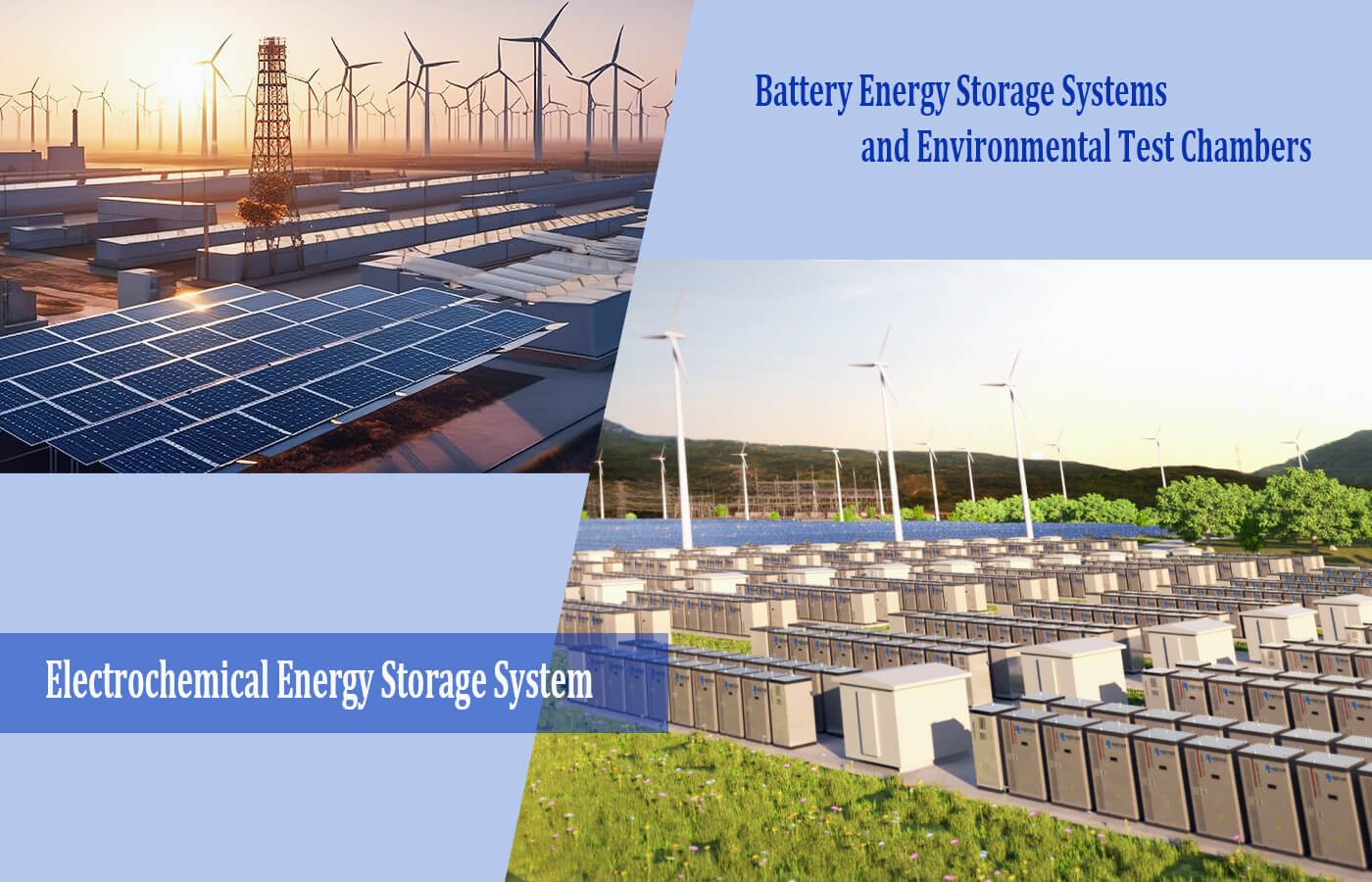With the adjustment of the global energy structure and the rapid development of renewable energy, the energy storage industry has become a new growth point. Especially in the context of increasingly fierce competition and saturation in the power battery market, more and more battery companies have turned their attention to the electrochemical energy storage market (battery energy storage system). This field not only provides a broad space for growth but also brings higher requirements for product performance, safety, and reliability. Environmental simulation chambers, as key tools, play an indispensable role in the development and verification of energy storage systems.
Application of Electrochemical Energy Storage Systems
Battery Energy Storage Systems (BESS) are a vital component of electrochemical energy storage systems, representing the most mature and widely used technology. Their application spans multiple fields, including residential, commercial, industrial, utility-scale, transportation, and remote areas, effectively meeting diverse user needs and promoting the efficient and sustainable use of renewable energy.
Home Energy Storage
BESS allows families to store electricity generated from solar or wind power, reducing dependence on traditional power grids.
Emergency Backup Power Supply
These systems provide reliable backup power during outages or emergencies, ensuring that essential equipment (such as refrigerators and medical devices) continues to operate.
Grid Support and Optimization
BESS helps manage grid frequency fluctuations and enhances overall grid stability.
Renewable Energy Integration
By storing electricity generated from renewable sources (such as solar or wind), BESS promotes the increased use of clean energy.
Composition of Electrochemical Energy Storage Systems
The electrochemical energy storage system is mainly composed of battery packs, battery management systems (BMS), energy management systems (EMS), energy storage converters (PCS), and other electrical equipment.
Battery Packs
Battery packs are the most important component of the energy storage system, responsible for the storage and release of energy.
Battery Management System (BMS)
The BMS monitors the status of the battery, including parameters such as voltage, current, and temperature. It also provides protection functions like overcharge, overdischarge, and overtemperature safeguards to ensure the safe operation of the battery and extend its service life.
Energy Management System (EMS)
The EMS is responsible for the scheduling and optimization of the entire energy storage system. It determines when to charge or discharge the batteries and adjusts the power levels based on factors such as power demand, electricity price fluctuations, and renewable energy generation, thereby maximizing economic benefits and ensuring stable system operation.
Energy Storage Converter (PCS)
The PCS is used to achieve mutual conversion between DC and AC and serves as a key device connecting the energy storage system to the power grid.
Application of Environmental Test Chambers in Energy Storage Systems
The electrochemical energy storage industry chain encompasses various materials, components, and products, all of which rely on environmental testing. This testing evaluates product performance stability by simulating different environmental conditions.
Hardware of Electrochemical Energy Storage Systems
● The main battery types in battery packs include lithium-ion batteries, lead-carbon batteries, flow batteries, sodium-sulfur batteries, and others.
● The energy storage converter (PCS) consists of electronic components such as IGBTs, capacitors, inductors, reactances, and PCB boards, as well as cabinets and chassis.
● The battery management system (BMS) includes various components and printed circuit boards. Among these, the thermal management system (TMS) comprises radiators, direct coolers, fans, heaters, temperature sensors, and controllers.
● The energy management system (EMS) features information collection terminals, communication management devices, data collectors, and more.
Electrochemical Energy Storage System and Environmental Simulation Chamber Solutions
Environmental Temperature Chambers: Simulates high and low-temperature environments.
Temperature Humidity Chambers: Simulates various temperature and humidity conditions.
Thermal Cycling Test Chambers: Simulates environments where temperature changes gradually or rapidly.
High Accelerated Stress Test Chambers: Simulates high temperature, high humidity, and high pressure, primarily used for chip testing.
Thermal Shock Test Equipment: Performs temperature shock tests between extreme high and low temperatures.
Salt Spray Test Chambers: Simulates coastal or high-salinity environments and conducts salt spray corrosion tests.
Altitude Test Chambers: Simulates low-pressure environments in high-altitude areas and can also incorporate temperature and humidity tests.
Hot Air Oven Uses in Laboratory: Performs high-temperature tests and drying.
Vacuum Dry Oven: Used for drying, baking, curing, degassing, and heat treating products under vacuum.
Walk-in environmental chambers: used for temperature and humidity environmental reliability testing of large products, such as inverters.
From power batteries to electrochemical energy storage, the transformation of battery companies is driven not only by market demand but also by the inevitable choices of technological innovation and industrial upgrading. As an essential tool for the development and verification of energy storage systems, environmental simulation chambers will play an irreplaceable role in this process. By thoroughly studying the composition, applications, and testing requirements of energy storage systems, companies can better respond to market changes and promote the sustainable development of the industry.

